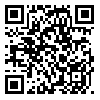Abstract Background & objective: This was a single-centre clinical trial study of patients with refractory idiopathic Overactive bladder syndrome (OAB) and it was defined as failed first-line treatment, including fluid restriction, bladder retraining and a trial of at least two anticholinergics at therapeutic dosage, for 6 months. is characterized by a combination of urgency, urinary frequency and urge incontinence. We designed this study to investigate the effectiveness and safety of intravesical Botulinum toxin A (BTA) in neurologically normal patients with refractory idiopathic OAB of the Lower Urinary symptoms. Material & Methods: 13 subjects with refractory idiopathic OAB were injected intravesicaly by injection of 300U of BTA (dyisport 300 units /vial,ipsen biopharm ltd,uk). Each vial diluted in 30 ml normal saline solution (0.9% NaCl). Injections were performed in 30 different sites (four rows of five above the inter-ureteric ridge) with careful attention not to deepen it too close to the advantia avoiding inadvertently intraabdominal viscera injection and observing the development of an increased local consistency (bulking) Before and after intervention, we recorded urodynamic results and the number of lower urinary tract symptoms (daytime frequency, nocturia, incontinency and urgency) during a 24-h period. Data were compared by paired t test. Results: In our study, there were 11 women and 2 men (52.38 ± 12.84 years). All of urodynamics results and lower urinary tract symptoms significantly decreased after intervention. Conclusions: Intradetrusor injection of BTA in refractory idiopathic OAB was associated with significant improvements in both objective and subjective outcome measures and shows safe procedure with remarkable efficacy.
Received: 2015/01/5 | Accepted: 2015/01/5 | Published: 2015/01/5
| Rights and permissions | |
 |
This work is licensed under a Creative Commons Attribution-NonCommercial 4.0 International License. |



